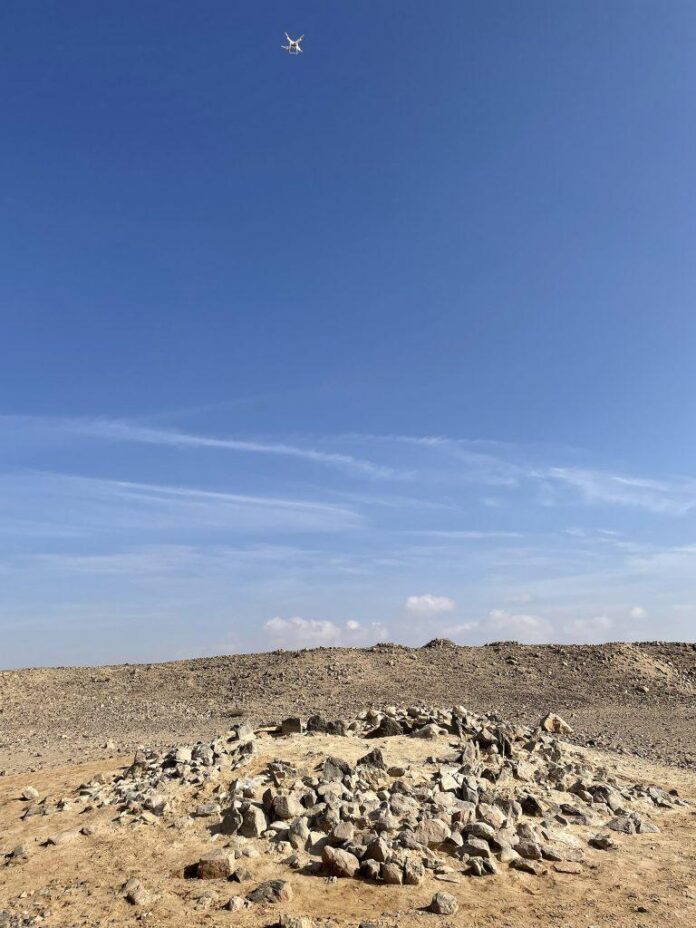A wide range of artifacts recently discovered in the deserts of Oman are helping archeologists understand the patterns of migration that took place in the region between 300,000 and 1.3 million years ago.
Among the finds made by the international team guided by the Institute of Archeology of the Academy of Sciences of the Czech Republic are ancient stone tools, a Neolithic tomb, eggshells belonging to an extinct species of ostrich, and a trilith, a cluster of stones that some archeologists have called an “Arabian Stonehenge,” in reference to the stone monument in England.

Trilith monument in Duqm. Photo: Roman Garba, Institute of Archaeology of the Czech Academy of Sciences.

Stone tools dating back 300,000 to 1.5 million years found onsite in Oman. Photo: the Czech Academy of Sciences
Archeologists focused on two sites, one in Zufar province in south Oman along the border with Yemen and the second in the Duqm region of central Oman. Although the sites today are largely dry and acrid, sporadic periods of wet climates over the millennia, or so-called green windows, made the areas hospitable to human settlement. This led to the Arabian Peninsula serving as a natural migration route from the African continent into Eurasia.

A drone shot of one of the archeological sites. Photo: the Czech Academy of Sciences.
The trilith was discovered at the Zufar site and dates back 2,000 years. Triliths are made up of three flat standing stones 50 to 80 centimeters tall that together create a pyramid and are typically found in clusters, as was the case in Zufar.
Hundreds, if not thousands, of triliths have been found across the Arabian Peninsula with archeologists on the Omar expedition using satellite images to help locate them. Who built them and what purpose they served remains a mystery, but researchers hope radiocarbon dating will begin offering clues.
“Triliths are one of the great mysteries of Arab archaeology,” Roman Garba at the Institute of Archaeology of the Czech Academy of Sciences told Artnet. “The most famous trilith or trilithon monument, as a category, is Stonehenge. Arabian triliths have probably similar function linked with rituals, but are smaller, and were built in different time.”

Photo: the Czech Academy of Sciences.
At the Duqm site, archeologists found a Neolithic tomb that dates from 5,000 to 4,600 B.C.E. The tomb was composed of two circular burial chambers including the skeletal remains of several dozen individuals.
Near the tomb, archeologists discovered a series of more than 500 rock engravings depicting animals including camels, horses, donkeys, and turtles, as well as 200 inscriptions written in a South Arabic script that is yet to be deciphered.

Rock engravings found in Oman. Photo: the Czech Academy of Sciences.
The next step is to process the collected samples. Luminescence dating will tell us when stone tools were buried and how the landscape was shaped. Radiocarbon dating will tell us when trilith monuments were in use and provide more accurate data on the migrations of trilith builders,” Garba said. “Our research aims to disentangle human occupation in southern and central Oman – a little studied region of Arabian Peninsula.”
The team is made up of 21 archaeologists and geologists from 10 countries and plans on returning to Oman in spring 2024.

























